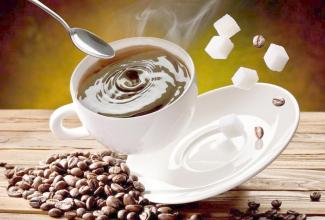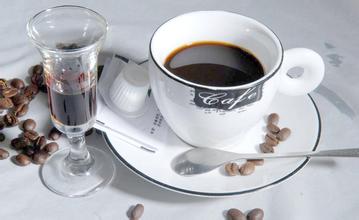Introduction to the characteristics of Flavor description treatment of Ethiopian Coffee Bean varieties
Ethiopian coffee taste varieties
Ethiopia's coffee should be the only pollution-free green organic coffee in the world. Ethiopia still uses traditional cultivation methods, artificial care of coffee trees, fertilizer mainly leaves, grass and animal manure, replacing harmful pesticides and herbicides used on a large scale in other coffee producing countries.
Ethiopia is now the production of mocha-Mocha coffee is the most famous, in addition to coffee varieties in the West Mocha name, but also refers to the method of brewing coffee or brewing coffee appliances and special conditioning methods, mocha coffee beans are mostly dry processing, but there are also so-called best washed beans, mocha coffee beans are known for their sour smell, while slightly sweet, slightly fragrant, caffeine content is low.
For coffee fans, don't care how the beans look, the most important thing is to drink. Ethiopian washed beans are much more stable than sun-dried beans, whose flavor fluctuates greatly from year to year, so be sure to cup them several times before buying them in large quantities. Good sun-baked beans have a much deeper flavor than washed beans, but ill-treated sun-baked beans are sure to be speechless, as many coffee fans say. Ethiopian beans look a little malnourished. But "beans" can not be judged by appearance, Ethiopian coffee citrus aroma can be called the world's best, whether instant coffee or freshly ground coffee, extraction on the smell of orange or lemon fragrance. On the palate, it has a rich floral, fruity and sour aroma that is characteristic of Ethiopia, but the body or consistency is slightly poor. The biggest drawback is that it is easy to bake unevenly, especially sun beans. Even the best Grade3 Harald sun-dried beans often have uneven bean color, which is the biggest defect of Ethiopian beans, but fortunately it does not affect its good flavor. How many Arabicaya species there are in Ethiopia, even the official research unit of Ethiopia is not clear. Coffee cooperatives on one mountain certainly grow different varieties than those on another, and even small farmers in the same area grow different varieties of coffee. Some estimate that there are at least 2,000 varieties of Ethiopian coffee, and there are even more than 4,500 varieties. Ethiopia's beans are easy to identify compared to the plump form of Bourbon 'SL28', the dominant variety in Kenya to the south, or the Central and South American and Asian tibeka. Most of the beans are small and thin, pointed, long-bodied beans, so-called 'longberry', often mixed with small oval short-bodied beans, so-called' shortberry', which look different in size and shape. Most commercial Grade4 or Grade5 beans are a mixture of hundreds of different seeds from each region, so the phase imbalance is most obvious, and it is difficult to roast evenly. Ethiopian coffee beans are divided into five grades. The first and second stages are water-washed beans. Grade1 means 0~3 defective beans per 300 g of raw beans;Grade2 means 4~12 defective beans per 300 g. Grade 1 washed beans are extremely rare and generally difficult to buy. At present, all washed beans exported from Ethiopia are Grade2. The quality of sun-cured beans is ranked as Grade3, Grade4 or Grade5. Although Grade4 has significantly fewer defective beans than Grade5, coffee farmers claim that in order to save taxes on exports, they often lower the Grade4 to Grade5 to save money. This may just be a marketing ploy, but in fact Grade5 is not as good as Grade 4.

Important Notice :
前街咖啡 FrontStreet Coffee has moved to new addredd:
FrontStreet Coffee Address: 315,Donghua East Road,GuangZhou
Tel:020 38364473
- Prev

The taste and flavor description of Guatemala Antigua Flower God, which is called "cigarette Coffee".
Antigua coffee is popular with most coffee lovers only because of its distinctive aroma. Because it is planted in the hills of volcanoes, it can retain its own characteristics more than Costa Rica, the main reason is that it has more geographical and climatic advantages than Costa Rica. Guatemala is located in the tropics, but because of its high altitude, Qi
- Next

What is Aldumara Coffee Mexican Coffee Bean Flavor description treatment Variety introduction
Mexican boutique coffee beans Irish coffee 25. Cappuccino coffee 26. Provence lover 27. Russian coffee 28. Blue sea and blue sky coffee 29. Hawaiian ice cream coffee 30. Swedish coffee 31. Greco-Roman coffee 32. Naples style coffee 33. Milanch coffee 34. Maria coffee (rose appointment) 35. Belgian coffee 36. Love coffee 37. Royal coffee
Related
- Detailed explanation of Jadeite planting Land in Panamanian Jadeite Manor introduction to the grading system of Jadeite competitive bidding, Red bid, Green bid and Rose Summer
- Story of Coffee planting in Brenka region of Costa Rica Stonehenge Manor anaerobic heavy honey treatment of flavor mouth
- What's on the barrel of Blue Mountain Coffee beans?
- Can American coffee also pull flowers? How to use hot American style to pull out a good-looking pattern?
- Can you make a cold extract with coffee beans? What is the right proportion for cold-extracted coffee formula?
- Indonesian PWN Gold Mandrine Coffee Origin Features Flavor How to Chong? Mandolin coffee is American.
- A brief introduction to the flavor characteristics of Brazilian yellow bourbon coffee beans
- What is the effect of different water quality on the flavor of cold-extracted coffee? What kind of water is best for brewing coffee?
- Why do you think of Rose Summer whenever you mention Panamanian coffee?
- Introduction to the characteristics of authentic blue mountain coffee bean producing areas? What is the CIB Coffee Authority in Jamaica?

